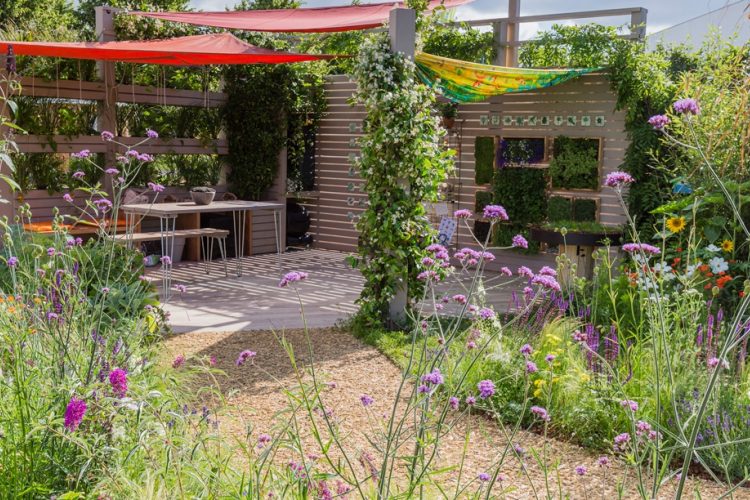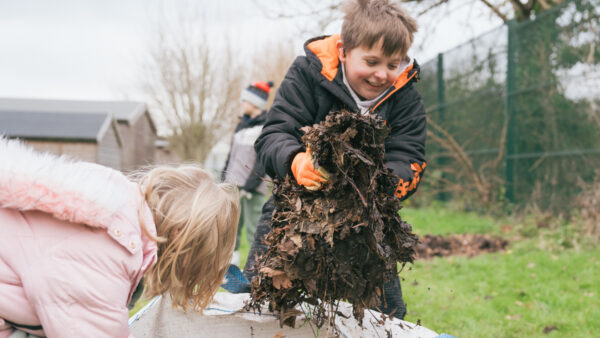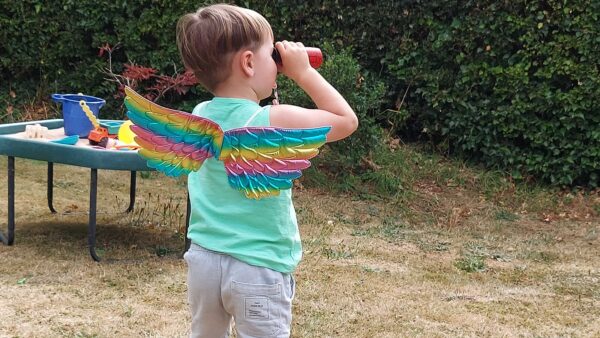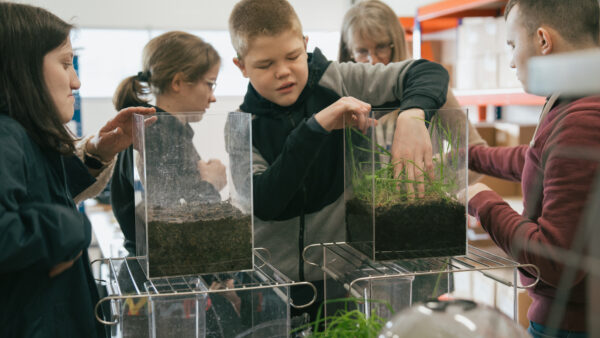Plants are the stars of the show in a sensory garden, find out how to make them really shine.
Plants need to fulfil different roles in a sensory garden. While they will usually be the stars of the show in terms of providing sensory interest, they will also be responsible for functional things like shelter from cold winds, shady respite from summer sun and enclosure for a quiet space.
Plants can also provide food and homes for wildlife and raw materials for indoor craft activities.
Plants for shade – look for options to make the most of any existing shade such as trees and structures. In new spaces, plant trees for the longer term, along with more immediate solutions like pergolas planted with climbers such as Wisteria and tunnels/structures made from basket willow. Aim for creating dappled rather than heavy shade which can be oppressive.
Plants for shelter – shelter from winds can be achieved by planting shrubs or trees, or a mix of both. Trellis planted with climbers is another option. Ideally the windbreak is porous rather than solid so that the wind is slowed down rather than deflected over and around which can produce gusts on the leeward side.
Long lasting plants - choose plants that are long-lived and don’t need regular maintenance. Including some evergreens will provide shelter through the winter. Include plants that serve other uses too. For example, holly that can be cut for Christmas foliage and elderberry to give flowers and berries for making cordials.
Seasonal interest – it is important to plan for sensory interest through the year, rather than everything happening over a few months. With care, there is plenty of interest that can be included for the winter months. When is your garden going to be used? Is it all year round or are there periods when it won’t be used much or at all? Make sure you plan your plantings so they give you the displays you want at the times when you most need them. It’s a good idea to make a calendar showing what plants will be in display in each month through the year so you can make sure it’s a good fit with how your garden is planned to be used. This can be a great group activity in the planning stage, getting people marking or sticking pictures of the plants for the different months.
You can add more layers of seasonal interest with bulbs and annuals to give you displays at times when other plants aren’t doing so much. Early signs of spring are welcomed by most people, but particularly those who find it difficult to go out much in the winter. Snowdrops, early daffodils and Hellebores are some of the earliest spring flowers.
Plants for reminiscence – plants, especially flowers, are great for triggering memories and this makes them ideal for reminiscence. This is particularly relevant for older people and those living with dementia and memory loss. In a garden it can be as simple as including some containers of annual flowers that are old favourites (e.g. marigolds, forget-me-nots, pansies, snapdragons), letting the grass grow longer between cuts so the daisies can flower, having a tub or two for planting a favourite vegetable (e.g. potatoes, runner beans) or growing some fresh mint for making tea.
Plants for celebration – do you have celebrations that your gardens can add to? Maybe growing pumpkins for Halloween, holly and other evergreens for Christmas, vegetables and fruits for a school festival, daffodils for spring. Do you have room to plant a tree (maybe in a container) that can serve as a Christmas tree? Ideally, include an outdoor socket nearby so people can decorate and add lights.
Plants to attract wildlife – There are plenty of flowers that attract butterflies and bees, for example ice plant (Sedum spectabile), buddleia and comfrey. Plant these near windows if you want the butterflies and bees to be seen from indoors. Plants can be included to attract birds, along with bird feeders to encourage their regular visits. Bird boxes and bug hotels are good ways of making a garden more wildlife-friendly and can be good hands-on making opportunities too. Fancy making some butterfly feeders? watch our how to make a butterfly feeder video in our library of resources.
Plants to avoid
As the point of a sensory garden is to encourage people to actively touch and explore plants we recommend avoiding ones that are toxic or likely to cause skin reactions or injury.
Is it poisonous? The Horticultural Trades Association list of potentially harmful plants puts plants in three categories, from A to C. The highest risk plants are in A and B, though you may decide to exclude all categories depending on intended users and the likelihood of them eating plant material or having particular skin sensitivities.
Is it thorny or spiny? Plants that are moderately prickly, like holly, can add nice sensory variety, but we advise avoiding using ones with more serious thorns, like pyracantha and some roses unless you put them out of reach.
Not another scented plant! Scents are important but a scent overload is unappealing. To avoid this, spread scents through the year and avoid too many ‘heady’ scents.
…..and finally there is often scope for some plants that require more work, such as bedding plants, but most projects don’t have budgets for a lot of regular maintenance. Try to chose plants that will be low maintenance i.e. they live a long time and don’t need staking or dead-heading.
Image Credit: RHS



